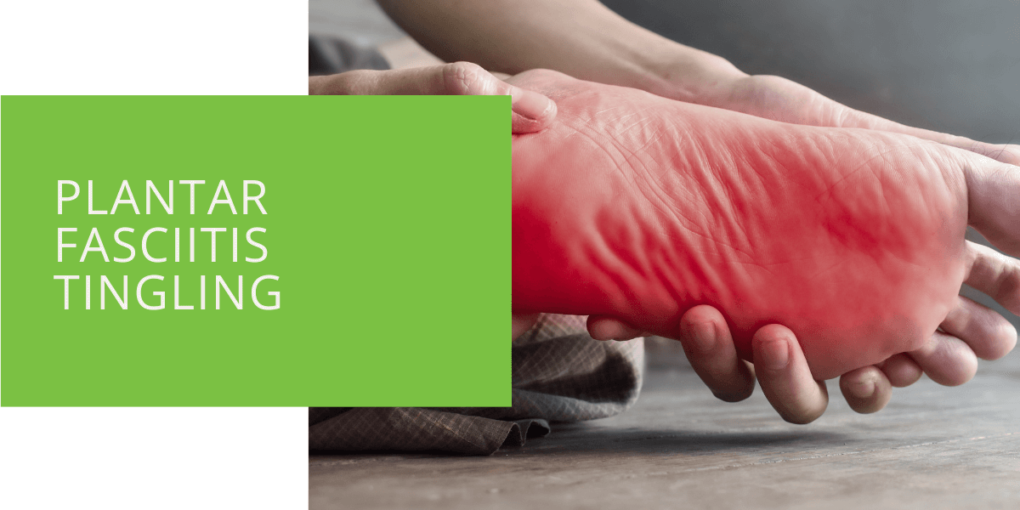Understanding Plantar Fasciitis Tingling
Understanding plantar fasciitis tingling is crucial for individuals experiencing discomfort in their feet. This article explores the symptoms, causes, and treatment options associated with this condition, providing valuable insights for effective management and relief. If you're dealing with sensations like tingling or numbness in your heel or the bottom of your foot, read on to better understand plantar fasciitis tingling and how to address it effectively.
Key Takeaways
- Plantar fasciitis tingling is characterized by sensations of tingling or numbness in the heel or bottom of the foot, often accompanied by plantar fascia inflammation.
- Factors such as overuse, foot structure, and obesity increase the risk of developing plantar fasciitis tingling, emphasizing the importance of early intervention and preventive measures.
- Treatment options include rest, ice therapy, stretching exercises, orthotic devices, and medical interventions tailored to address inflammation and alleviate symptoms of tingling and discomfort.
What is Plantar Fasciitis?
Plantar fasciitis is characterized by inflammation of the plantar fascia, a thick band of tissue that runs along the bottom of your foot, connecting your heel bone to your toes. The plantar fascia supports the foot arch and absorbs shock during walking and running. When this tissue becomes inflamed or irritated, it can lead to heel pain and other symptoms, including tingling and numbness.
Plantar fasciitis commonly affects individuals who engage in activities that put repetitive stress on the feet, such as running, walking, or standing for long periods. The inflammation of the plantar fascia can occur due to various factors, including overuse, improper footwear, biomechanical issues, or sudden increases in physical activity.
Symptoms of Plantar Fasciitis Tingling
In addition to heel pain, individuals with plantar fasciitis may experience tingling or numbness in the affected foot. This sensation is often felt along the arch of the foot or in the heel area. Tingling can range from a mild, pins-and-needles sensation to a more pronounced numbness that affects mobility and comfort. Paying attention to these symptoms and seeking prompt medical attention to address the underlying cause is essential.
Tingling sensations in plantar fasciitis often occur during weight-bearing activities, such as walking or standing, and may worsen with prolonged activity. Individuals may also experience stiffness and discomfort in the morning or after periods of rest, as well as pain that improves with movement but worsens with continued activity.
Why Does Plantar Fasciitis Cause Tingling?
Tingling in plantar fasciitis can be attributed to several factors. One common cause is nerve compression or irritation resulting from plantar fascia inflammation. As the inflamed tissue swells, it can pressure nearby nerves, leading to tingling sensations. Additionally, prolonged strain on the plantar fascia, such as standing for extended periods or engaging in high-impact activities, can exacerbate symptoms of tingling and numbness.
The plantar fascia is closely associated with the nerves that innervate the bottom of the foot. Inflammation of the plantar fascia can irritate these nerves, leading to abnormal sensations like tingling or numbness. Additionally, biomechanical issues, such as flat feet or high arches, can alter the pressure distribution on the plantar fascia, further contributing to nerve compression and tingling sensations.

Risk Factors for Developing Plantar Fasciitis Tingling
Several factors may increase your risk of developing plantar fasciitis tingling, including:
- Overuse: Engaging in activities that place repetitive stress on the feet, such as running or dancing, can increase the likelihood of developing plantar fasciitis.
- Foot Structure: Individuals with flat feet or high arches may be more prone to developing plantar fasciitis due to abnormal foot mechanics.
- Obesity: Excess weight can strain the plantar fascia, increasing the risk of inflammation and related symptoms.
- Occupational Factors: Jobs that require prolonged standing or walking on hard surfaces can contribute to the development of plantar fasciitis.
Other risk factors for plantar fasciitis tingling include age (middle-aged individuals are more susceptible), certain sports activities (such as ballet or gymnastics), and inadequate footwear (wearing shoes with poor arch support or cushioning). Additionally, underlying medical conditions such as arthritis or diabetes can increase the risk of developing plantar fasciitis and related symptoms.
Confusing Plantar Fasciitis with Other Conditions
Plantar fasciitis tingling may be mistaken for other foot conditions, such as tarsal tunnel syndrome or nerve entrapment. However, key differences in symptoms and diagnostic indicators can help differentiate between these conditions. Consulting with a qualified podiatrist for an accurate diagnosis and tailored treatment plan is crucial.
Tarsal tunnel syndrome, for example, involves compression of the posterior tibial nerve as it passes through the tunnel, resulting in tingling, burning, or shooting pain along the bottom of the foot. Nerve entrapment conditions may present with similar symptoms but require specific diagnostic tests, such as nerve conduction or imaging studies, to confirm the diagnosis.
Treatment Options for Plantar Fasciitis Tingling
Treatment for plantar fasciitis tingling typically involves a combination of conservative measures and medical interventions. Some treatment options may include:
- Rest: Resting the affected foot can help alleviate symptoms and promote healing.
- Ice Therapy: Applying ice to the affected area can reduce inflammation and relieve pain.
- Stretching Exercises: Gentle stretching exercises targeting the calf muscles and plantar fascia can help improve flexibility and reduce tension.
- Orthotic Devices: Custom orthotic inserts or arch supports can provide support and alleviate pressure on the plantar fascia.
- Medications: Nonsteroidal anti-inflammatory drugs (NSAIDs) may be prescribed to reduce pain and inflammation.
- Physical Therapy: Physical therapy modalities, such as ultrasound or electrical stimulation, may be recommended to promote healing and relieve symptoms.
In severe plantar fasciitis tingling that does not respond to conservative treatments, medical interventions such as corticosteroid injections or extracorporeal shock wave therapy (ESWT) may be considered. These treatments aim to reduce inflammation and promote tissue healing, alleviating symptoms and improving foot function.

Lifestyle Modifications for Pain Relief and Prevention
In addition to formal treatment methods, lifestyle modifications can help manage symptoms of plantar fasciitis tingling and prevent recurrence. Some tips may include:
- Wearing supportive footwear: Choosing shoes with proper arch support and cushioning can help reduce strain on the plantar fascia.
- Maintaining a healthy weight: Losing excess weight can alleviate pressure on the feet and decrease the risk of developing plantar fasciitis.
- Avoiding high-impact activities: Limiting activities that exacerbate symptoms, such as running or jumping, can help prevent further irritation of the plantar fascia.
Moreover, incorporating regular stretching and strengthening exercises into your daily routine can help improve foot flexibility and muscle strength, reducing the risk of plantar fasciitis and related symptoms. Additionally, maintaining good foot hygiene and avoiding barefoot walking on hard surfaces can minimize the risk of injury and inflammation, promoting overall foot health.
Conclusion
Understanding the symptoms, causes, and treatment options for plantar fasciitis tingling is essential for effective management and prevention. Don't ignore these symptoms if you're experiencing heel pain or tingling sensations in your feet. Seek professional evaluation from our experienced podiatrists at ePodiatrists. With personalized care and treatment, we can help you find relief and get back on your feet. Schedule an appointment today and take the first step toward healthier, pain-free feet.

